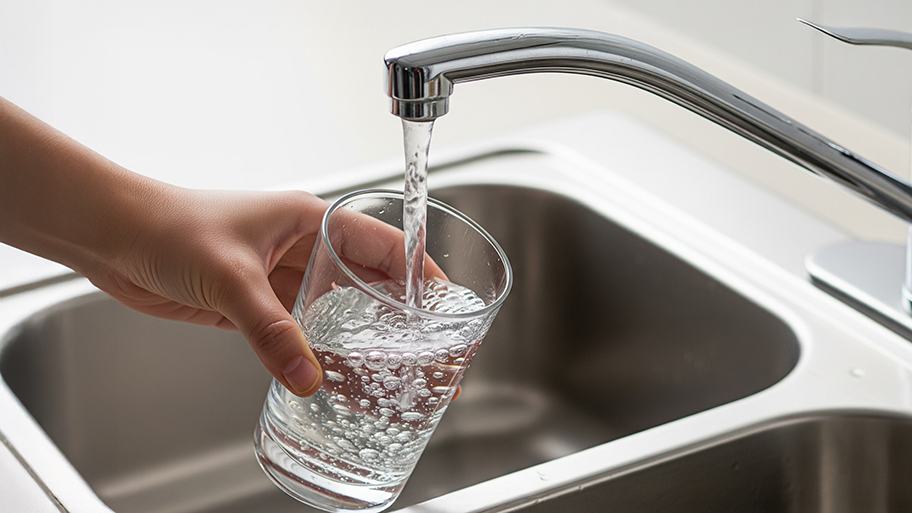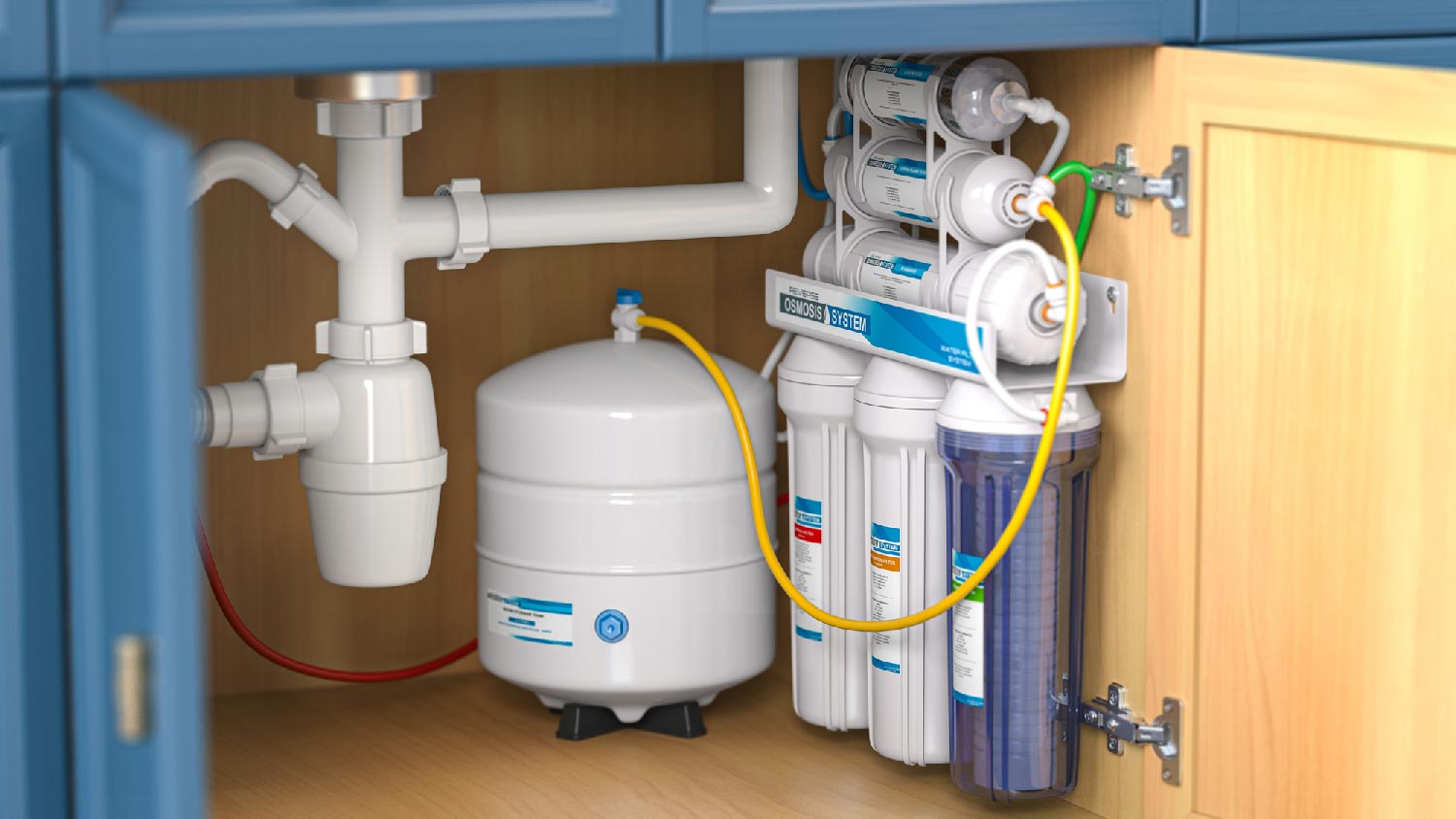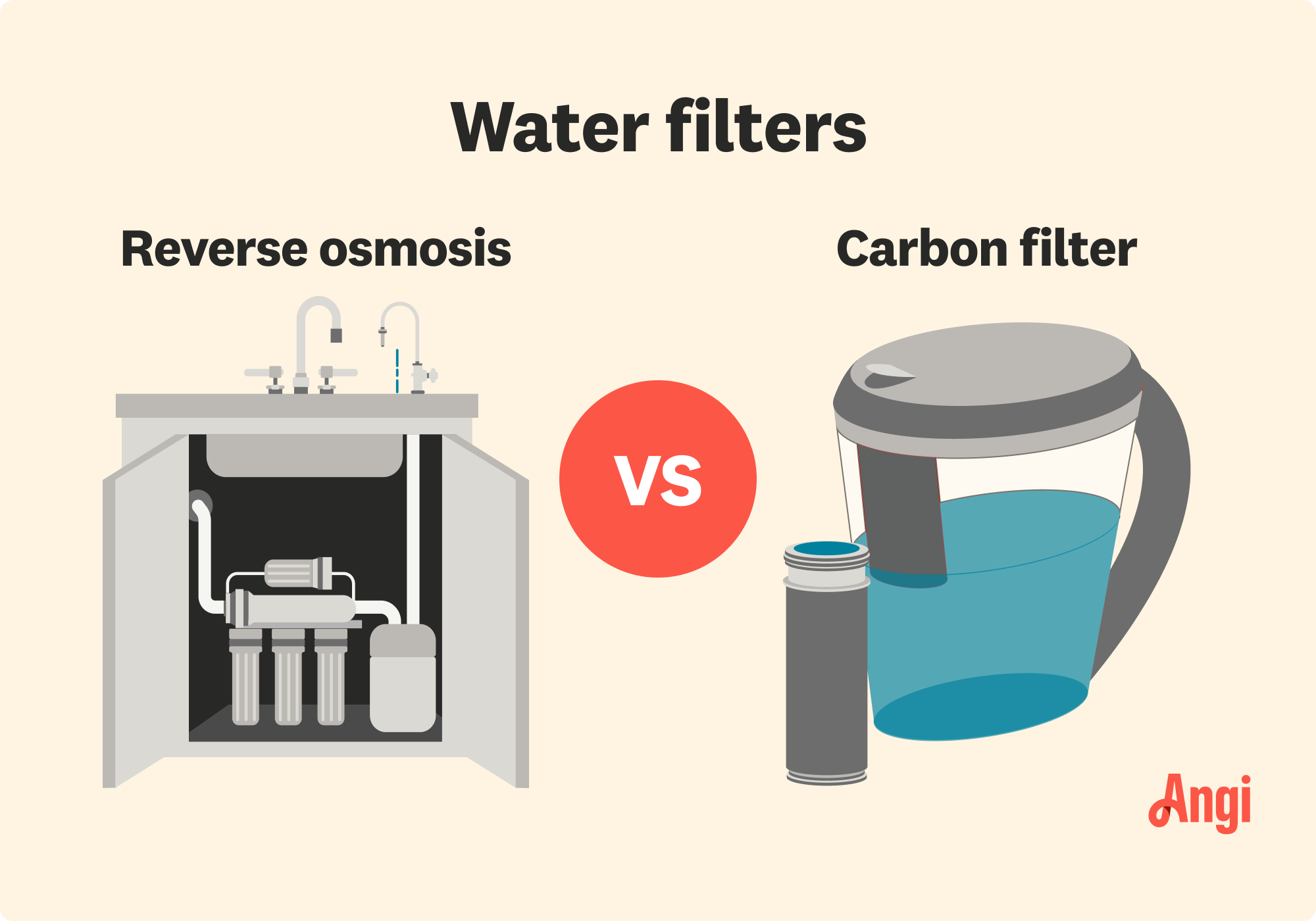
On average, a reverse osmosis water filter costs around $2,200, but there are a few variables that impact the total price. Learn about them in this guide.
Both will improve your tap water, but which one is right for you?


Reverse osmosis can get rid of sugars, pesticides, herbicides, lead, viruses, and bacteria in water.
Carbon filters can get rid of bacteria and lead in water.
Reverse osmosis systems often include a carbon filter, but you can also use a carbon filter on its own in water pitchers.
Pitcher filters are inexpensive, but RO systems, which can cost $4,800 or more, pay off over time.
Despite strict standards for the quality of drinking water, your tap water could benefit from further filtration. While water pitchers with carbon filters are a good start, you might consider whether investing in a whole-house reverse osmosis (RO) water filtration system is right for you. Here’s what you need to know if you are considering reverse osmosis versus carbon water filtration for your home.

Carbon filtration does a good job of removing contaminants like lead from drinking water in a water pitcher or large bottle. However, a full reverse osmosis system removes just about everything that’s polluting your water. Additionally, carbon filtration is a part of the RO process, which removes other microscopic contaminants from water as the water gets pushed through a semipermeable membrane.
Here’s how carbon water filtration stacks up to reverse osmosis when it comes to eliminating different contaminants from your drinking water:
| Contaminant Type | Reverse Osmosis | Carbon Filter |
|---|---|---|
| Bacteria | Yes | Yes |
| Viruses | Yes | No |
| Lead | Yes | Yes |
| Pesticides and herbicides | Yes | No |
| Sugars | Yes | No |
Keep in mind that there are dozens of contaminants that have the potential to make it into your drinking water. While RO removes more of them, carbon water filtration is still a good preventative measure and is much better than having no filtration system at all.
Look for an NSF rating on your water treatment device. These ratings come from the National Sanitation Foundation and give you more detail about what a product does. An NSF seal also means that the product has been tested and certified safe with proper use.

Carbon filtration removes some contaminants, including lead and bacteria. A carbon filter in a water pitcher may also be able to remove large sediment particles.
However, reverse osmosis removes nearly all contaminants you may find in water, including lead, bacteria, pesticides, herbicides, viruses, and sugars. RO can even remove pollutants that have already dissolved in the water, making your water that much safer to drink.
Want better-tasting water? All it takes is a water pitcher with a carbon filter. While much simpler than a whole-house reverse osmosis system, carbon filtration alone is enough to remove much of the odd taste and odor associated with chlorine and other large particulates found in drinking water.
Reverse osmosis removes nearly all contaminants, but it’s only able to do so with the inclusion of at least one carbon filter before (and sometimes after) the water passes through the membrane. Because RO systems include additional filters, water from a tap treated with a reverse osmosis system may taste slightly more crisp to the water connoisseurs among you.

A filtered water pitcher that you can purchase from any supermarket or home improvement store only uses a replaceable carbon filter. As you fill the pitcher from the tap, the carbon filter captures major contaminants, removes odors, and produces better-tasting water.
With an RO system, a carbon filter is used at least once to capture sediment before sending it through the semipermeable membrane. This membrane contains pores that are so small that only the water can get through, leaving behind even dissolved contaminants. An RO system also uses other types of filters in addition to carbon filters to trap different types of contaminants.
In short, carbon filtration is effective, but it is only one part of the multi-step process used in reverse osmosis.
A whole-house reverse osmosis water filtration system costs $1,000 to $4,800, plus around $400 per year on operating costs and maintenance. This doesn’t mean that you should exclude reverse osmosis based on price alone, though. While the initial investment might seem steep, it often pays for itself over time.
You can likely snag a multi-pack of carbon filters for your reusable water pitcher for $20 to $30 at your local grocery superstore. However, you need to change these every couple of months whenever the water starts tasting bad again, which is a more intensive maintenance schedule than RO systems.
A home filtration system and water softener can greatly improve the quality and safety of your water at a relatively low cost. Compared with purchasing bottled water for drinking and cooking, replacing expensive appliances, and time spent cleaning showers and bathrooms, water filtration and softening equipment can be very cost-effective.
Reverse osmosis water filtration wastes a lot of water. According to the U.S. Environmental Protection Agency, point-of-use systems (aka under-sink filters) alone waste 5 gallons of water for every 1 gallon of filtered water.
When you use a carbon filter in a water pitcher, you’re not wasting any water. Plus, some popular water filter companies have free recycling programs in which they’ll ship you a label and you can return any old, used filters to the company, where they’ll recycle them for you.
You can easily purchase a carbon water filter online or at a local supermarket or home improvement store when it’s time for a swap. Changing out a pitcher filter takes about 10 seconds of your time. You may need to fill the pitcher one or two times before you can drink it, which only takes a couple of minutes.
However, you’ll need to call a local water softener installer to learn about your options for an RO system, install the system, and repair the system in the future, if needed. DIYers cannot install whole-house reverse osmosis systems, making carbon filtration the simpler solution when it comes to installation.
To be clear, a reverse osmosis filtration system does include carbon filtration at some stage of the game. And while the carbon water filter pitcher you have in your refrigerator is effective with some level of purification, it’s not as effective as sending it through the semipermeable membrane and multiple filtration stages at the heart of a reverse osmosis filtration system.
From average costs to expert advice, get all the answers you need to get your job done.

On average, a reverse osmosis water filter costs around $2,200, but there are a few variables that impact the total price. Learn about them in this guide.

How much a water softener costs depends on your home’s size, and the system’s type and capacity. Our expert guide explores all the price factors.

Water softener repair costs can add up, but they’re almost always worthwhile. Use this guide to see what your project is going to cost before you get started.

If your water softener is constantly draining, you may have a stuck valve, old seals, or electrical issues. Explore more common problems and solutions here.

Installing a water softener is best done if you have some DIY plumbing experience. Keep reading to learn how to install a water softener for your home.

Descalers and softeners both prevent scale buildup—but in different ways. Not sure which one you need? Here’s a rundown of descalers versus water softeners.